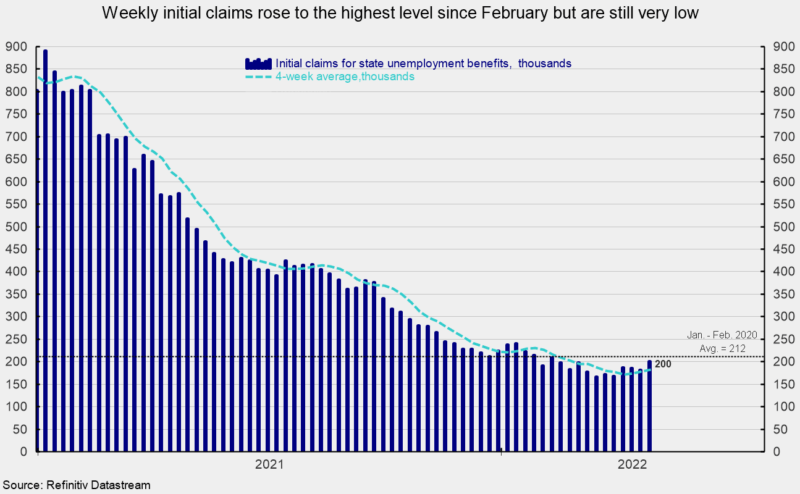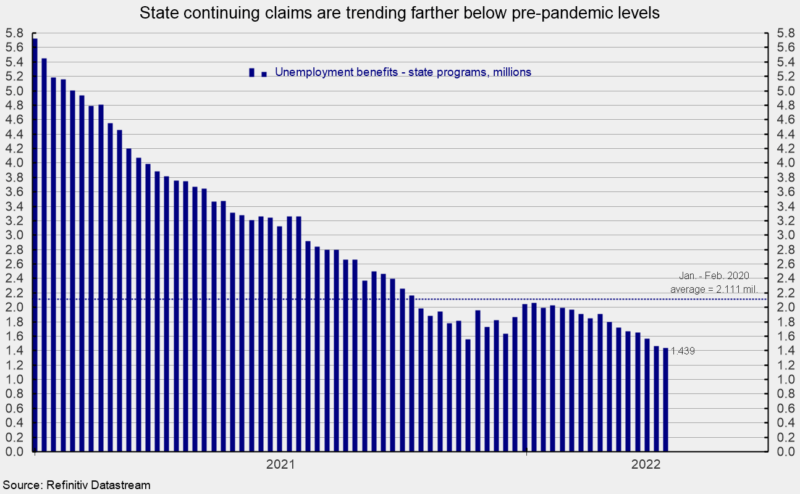Weekly Initial Claims Hit an Eleven-Week High but Remain Below the Pre-Pandemic Level
Initial claims for regular state unemployment insurance rose 19,000 for the week ending April 30, coming in at 200,000 (see first chart). The latest result is the largest weekly increase since July 17, 2021, and the highest level since February 11. However, claims have declined in ten of the last fifteen weeks and remained below the January – February 2020 average of 212,000 prior to the lockdowns for the thirteenth consecutive week. By long-term historical comparison, initial claims remain extremely low.
The four-week average rose for a fourth consecutive week, coming in at 188,000, up 8,000 from the prior week and is the fifth increase in the last 12 weeks. Weekly initial claims data continue to suggest the labor market remains very tight. However, disruptions to the global economy due to the Russian invasion of Ukraine, renewed lockdowns in China, and a new Fed tightening cycle may cause volatility to economic activity in coming months.
The number of ongoing claims for state unemployment programs totaled 1.439 million for the week ending April 16, a drop of 22,413 from the prior week (see second chart). State continuing claims have declined in 12 of the past 14 weeks and have been below their pre-pandemic level of 2.111 million since October 2021 (see second chart).
The latest results for the combined Federal and state programs put the total number of people claiming benefits in all unemployment programs at 1.478 million for the week ended April 16, a decrease of 35,165 from the prior week. The latest result is the tenth week in a row below 2 million.
Despite some volatility, initial claims remain at an extremely low level by historical comparison. The overall low level of claims combined with the record-high number of open jobs suggest the labor market remains very tight. The tight labor market remains one of the strongest parts of the economy, providing support for consumer attitudes and consumer spending.
However, continuing labor shortages, along with materials shortages and logistical issues, are likely to continue to slow the recovery in production across the economy and sustain upward pressure on prices. In addition, the Russian invasion of Ukraine, renewed lockdowns in China, and the start of a new Fed tightening cycle will likely weigh on future economic activity. The outlook remains highly uncertain.







